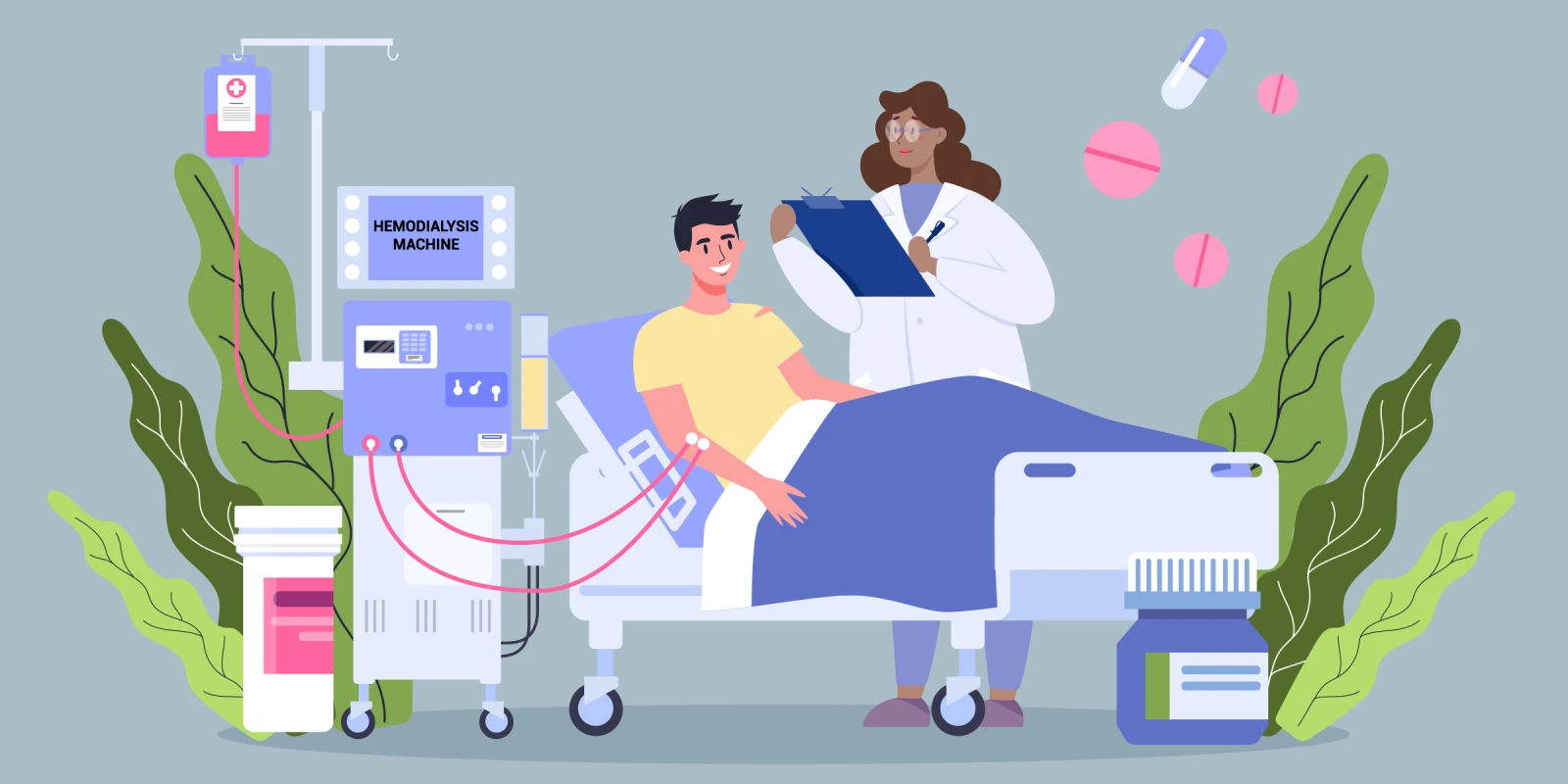It was a Monday morning, and I walked into the dialysis clinic that day like it was any other Monday. With my white coat, my stethoscope, my checklist, and my pen in my pocket, I grabbed my rounding cart and set off to see my dialysis patients. Passing by the nurses' station, I smiled and said "good morning," as usual. As I walked toward the first patient’s dialysis chair, the lead nurse approached me and told me that Ms. E.B. had passed away the day before.
“What happened?” I asked in surprise.
“They just found her dead on her bed yesterday. We should be receiving the cause of death in a few days,” she replied.
My heart fluttered. Did I miss something when I saw her last Friday? Panicking, I immediately went into the white rounding binder and checked my notes twice. But they showed nothing went wrong during her last dialysis treatment. Her physical exam was normal, her labs were normal, and she left within her estimated dry weight. According to all of my information, everything checked out.
At that time, I was five months new to the world of dialysis. In fact, doing rounds in dialysis units was my first NP job. I rounded at six dialysis units and saw about 380 patients per month. On a usual workday, I went to two to three dialysis units and saw up to 70 patients in one day. I always used a checklist to guide my workday. With a checklist, I knew what time I needed to leave one dialysis unit to get to the next in order for me to be on time to see the last patient on the previous shift. I knew to check patients’ vitals, medications, labs, dry weight, and to complete their physical exams.
A few days later, we learned that Ms. E.B.’s death was due to a cardiac arrest. Her potassium was slightly above the normal level and this was the most likely cause. In my training, I had been told about the risk of hyperkalemia in dialysis patients, especially over the weekend when patients tend to eat and drink more, in addition to having a longer interval without dialysis. Intellectually, I understood the pathophysiology of the cause of her death, but what I learned still left me in a state of shock.
Ms. E.B.’s death led me to wonder about tasks that were not on my checklist, like how I had interacted with her. Had I smiled? Had I listened to her enough? Had I asked her if she needed anything? Had I helped her to have a good last day?
Moreover, I started to think about what a patient goes through during a dialysis treatment. In essence, the patient hands over their arm to the nurse or technician for a needle to be inserted through the dialysis access. The patient is then connected to a dialysis machine, which then literally filters the patient’s blood of waste, removes fluid, and returns the filtered blood to the patient’s body. During treatment, the patient’s blood pressure, heart rate, and venous pressures are monitored to prevent too much fluid from being removed (so that the patient does not crash). Additionally, dialysis patients commonly experience headaches, nausea, vomiting, and cramping if too much fluid is removed during the treatment. Dialysis can be very risky and exhausting. Yet, patients dedicate 12 hours of their week for years to dialysis — to feel well and stay alive.
Ms. E. B.’s experience showed me how dialysis truly helps keep patients alive. But it also showed me how unbelievable the human body’s ability to tolerate dialysis is. Her death taught me that even the slightest alteration in the body’s chemistry — such as potassium — increases the risk of death for a dialysis patient.
I started to see the importance of my role as an NP in helping dialysis patients stay alive, but also to make sure they were comfortable during their treatment. Most importantly, her death made me realize a patient may not always make it to their next treatment, and that when I see them during my rounds, it may be for the last time.
As a new clinician in dialysis, it was very easy to get caught up in tasks and lists, especially when seeing patients with a limited amount of time. Stress can take me away from a place of compassion and empathy, and from a place of genuinely wanting to help patients. Certainly, intelligence and competence in the field are important qualities for a clinician to treat a disease, but the part of me that is human — that feels and senses — is the part that will lead to fully treating a patient. I embraced this new lesson in the years that followed Ms. E.B.’s death.
I no longer work with dialysis patients, but I will always remember my time working in dialysis as the defining years of my NP career. In many ways, it was a steep learning curve, but it taught me to never undervalue the moments spent with my patients, no matter how brief.
Looking back on my experience, I realize that Ms. E.B. and my other dialysis patients were the best teachers I could have asked for during my first years as a practicing NP. To have had the opportunity to work with individuals who had so much courage and strength, all while facing some of the most difficult health and life challenges, was truly a gift. I will, for the rest of my life, be grateful for this incredible experience.
Joanne is a mother and NP from San Francisco, CA. She loves to write about the intersection of health, spirituality, feminism, and motherhood. A story's ability to inspire wisdom and self-reflection in others is what motivates her to write. She is a 2020–2021 Doximity Op-Med Fellow.
All names and identifying information have been modified to protect patient privacy.
Image by Inspiring / Shutterstock







